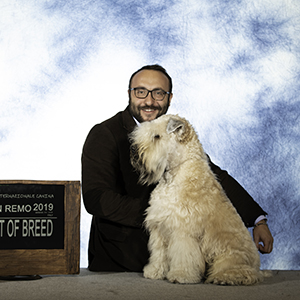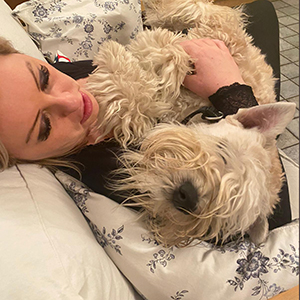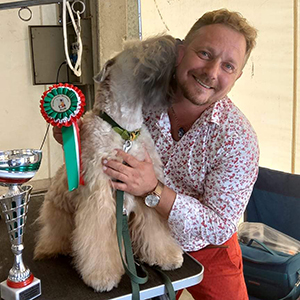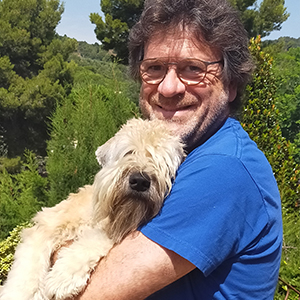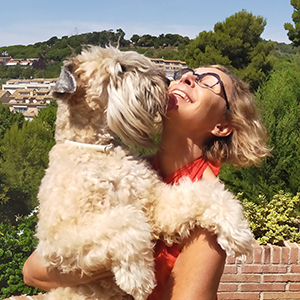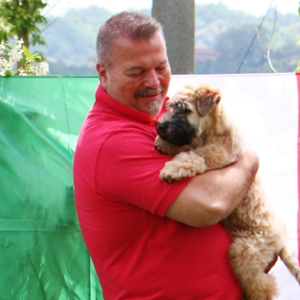THE STANDARD highlights a proud bearing, a square and compact trunk, solid shoulders, well adhering to the ribcage. Well-angled hindquarters, strong and horizontal back and short and powerful loins. The head is not coarse and must be in good proportion with the body. The muzzle shall not be longer than the skull, which must be flat. Jaws must be strong, able to ensure a firm bite, the stop is well-marked. Well-developed black nose. The eyes are neither too big nor prominent, dark hazel colour. Ears small to medium in size, dropping slightly forward, breaking level with the skull. If darker in colour than the body coat, this feature is not rare and is allowed. Rose or hound ears are a fault. The neck is of moderate length, without dewlap. Tail well set on, not too thick and carried gaily. Teeth are well developed. Scissor or level bite of the incisors. Not too tall, nor too short, small feet with tight toes, nails should preferably be black. The movement of the fore and hind legs must be strictly parallel, both from the front and from behind, elbows being well-adhering to the body. Seen from the side, movements must look free, light and well coordinated. In adults, the hair texture is fine and silky to the touch, without hardness.
Colour: all colours ranging from light wheat to golden red.
Size: dogs 46 - 48 cm (18-19 inches); bitches a little less.
Weight: dogs 18 - 20 kg (40 - 44 pounds); bitches a little less.
As in many other breeds, PUPPIES LOOK VERY DIFFERENT FROM ADULTS, especially with regard to the COLOUR and the TEXTURE OF THEIR COAT. At birth, puppies’ coat is reddish. They often have a black mask and darker paws and back. As they grow, dark areas will disappear and turn into the definitive wheaten colour.
There are two types of ISCWT: the "Irish type" and the "American type". This difference is often confusing for those meeting the ISCWT for the first time.
A MATTER OF HAIR
THE IRISH TYPE is characterized by a less thick coat and a lighter wheat colour. The hair grows more slowly - especially on the legs - thus making Irish-type dogs look more immature in development. The maintenance of hair is less demanding, which makes it easier to use them as working dogs in the fields. Thicker coats were not preferred by the Irish and therefore sent to other countries. Their temper also differs from the American type: they tend to be more reserved and fiery in character.
The AMERICAN-TYPE dogs have a significantly meeker character and a thicker hair of golden red colour. Their coat becomes more difficult to maintain at around seven / eight months of age. Young dogs’ coat is often made of hairs of different texture and tends to become opaque and becomes knotted easily. Owners shall devote a lot of time to the care and maintenance. But this will not be the case forever, as the coat keeps changing in colour and texture until dogs are between 18 months and 2 and a half years of age. Finally owners will be rewarded for their patience and diligence: the coat becomes finer, silky, uniform and will form the typical soft and shiny waves.
This difference in coat texture is the reason why it is so difficult to define the best grooming style for an ISCWT. Much depends on the country where dogs are shown, the individual coat growth and personal preferences.
Breeders have been working together on both sides of the ocean to expand the genetic pool. Hopefully this will produce a more uniform ISCWT type in the future.
GROOMING TIPS
All breeds, even short-hair breeds, require good grooming practices to minimise hair loss and prevent health issues: parasites, skin diseases and excoriations. Long-hair dogs should be kept tidy and brushed regularly. The wonderful coat that our friends are provided with DOES NOT CAUSE ALLERGIES, IS NOT SMELLY AND IS NOT SHED. However, it requires some effort to keep it in excellent conditions.
Puppies should get used to these practices from an early age and it is advisable to brush them several times a week to get them used to longer sessions and to make groomers’ work easier. Let your breeder advise you on the most suitable tools to be used for these tasks. It is important to brush and comb the coat in the correct way, starting from the skin. It happened to me several times to see ISCWTs in my grooming shop, that at first glance looked in good conditions, but which actually had bad knots and felted hair on the skin. That's why I always recommend to brush the hair in depth. You should bath your dog once a month or a month and a half. You can do it yourself or ask a professional. Always use a high-quality shampoo - that is not too harsh - specific for long coats, and a conditioner. As for drying, blot with a towel and wring following the natural direction of the hair. Avoid rubbing back and forth, as this could horribly knot the hair. Blow dry the coat at medium temperature while combing your dog and I wish you good work!!!

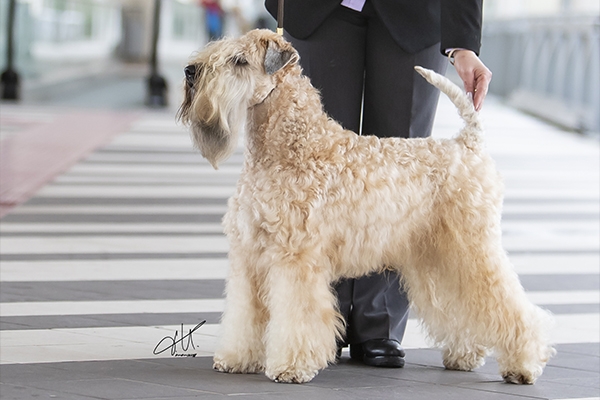

 English (UK)
English (UK)  Italian
Italian 